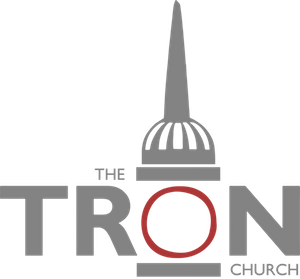"1 Now even the first covenant had regulations for worship and an earthly place of holiness. 2 For a tent was prepared, the first section, in which were the lampstand and the table and the bread of the Presence. It is called the Holy Place. 3 Behind the second curtain was a second section called the Most Holy Place, 4 having the golden altar of incense and the ark of the covenant covered on all sides with gold, in which was a golden urn holding the manna, and Aaron's staff that budded, and the tablets of the covenant. 5 Above it were the cherubim of glory overshadowing the mercy seat. Of these things we cannot now speak in detail.
6 These preparations having thus been made, the priests go regularly into the first section, performing their ritual duties, 7 but into the second only the high priest goes, and he but once a year, and not without taking blood, which he offers for himself and for the unintentional sins of the people. 8 By this the Holy Spirit indicates that the way into the holy places is not yet opened as long as the first section is still standing 9 (which is symbolic for the present age). According to this arrangement, gifts and sacrifices are offered that cannot perfect the conscience of the worshiper, 10 but deal only with food and drink and various washings, regulations for the body imposed until the time of reformation."
Hebrews 9:1-10
The means whereby God's people made their approach to Him was the tabernacle, and to this the Apostle now turns. In 5 he says that he cannot at this point in his argument speak particularly about the details of its furniture, but we must remember that he was writing to people who were familiar with the whole conception as we are not, and so we must pause, as they did not need to, in order to become clear in our minds as to the general structure and significance of this central Old Testament institution. The Tabernacle had three sections, the outer court, the holy place and the holiest of all. In the outer court, when you approached it from the gate, there was first of all the altar of burnt offering. Beyond it there was the laver in which the sacrificial washings took place. Beyond this was the door leading to the holy place, in which were three articles of furniture; on the right the table of shewbread, on the left the seven-branched golden candlestick, and beyond these the altar of incense facing the door into the holiest of all. Within this inner sanctum was the Ark of the Covenant in which reposed the tables of stone given by God on Mount Sinai. This was originally all the ark contained, but at a later stage of Israel's history there were added Aaron's rod that budded and the pot of manna as a kind of memorial of the wilderness wanderings of the people. Now the significance of these articles was symbolic. They spoke in shadows and illustrations of the Christ that was to come and it was because they did that believing souls coming to the Tabernacle and doing sacrifice there to God were accepted by Him and their sins covered until the time of the new covenant when they would be taken away.
